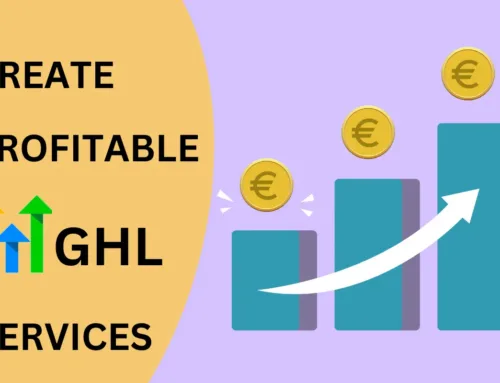Every web design agency needs to know how to manage their clients and their clients’ expectations successfully. Effective client management is at the core of every healthy and profitable business relationship. Why? It’s because satisfied clients will always seek more of your expertise, especially expertise that they can’t find from other suppliers.
This is not a discussion of what a client’s web design expectations are, but rather how these expectations can be effectively handled.
There are two types of clients:
- Those who provide the clearest briefs, appreciate the development team’s skills and recommendations, and even give a bonus when satisfied with the work. These clients know and acknowledge that they are not experts.
- Those who undervalue the expertise of the team, devalue the finished project to the point of requiring it to be reproduced from scratch because they do not know what they want exactly, and refuse to pay in the end. Their requests are endless and their approvals are inconsistent.
With that said, what clients expect for a web design project are probably the same as your own expectations. But since you are the expert, your number-one priority is making sure that you and your client are on the same page. Here’s how to do just that.
1. Address the Red Flags Early On
It’s rather easy to spot the red flags. The tricky part lies in correcting them to further guide the expectations of the client. When a client tells you, “The design is easy, it should only take three days at most,” tell him, “The team needs to look at the specifications first, and they will give you a timeline for that.”
If they ask, “You can make all the decisions for us, so we can focus on other things,” tell them, “No, this is your website, not ours. Your full commitment is needed.” Or, you can say, “We will send a progress report with all the notes about the project. We expect your feedback in 1 to 2 days.”
2. Provide Clear and Honest Answers
At the start of any web design project, the client is sure to have plenty of questions. You need to answer those questions as truthfully as you can. Clients yearn for transparency right from the moment they started scouting for a provider. The more they know about the services and providers, the more they either narrow or widen their expectations.
Part of being honest involves telling a client that the features she wants do not add value to the site. When a client hears these things, the web development representative needs to offer alternative solutions appropriate for the client’s needs, preferences, and budget.
As the chosen provider, opt to educate the client whenever possible. Some clients asked for the craziest features because they don’t know any better. However, if you can guide them on what works on the Internet now and why their website must have this and that, do so. Explain the rationale behind every recommendation if you must. Prove your case by showing examples or statistics.
3. Build Trust and Confidence Ahead of Time
Whether the client used the contact form, phone, or email, the goal is to respond to the inquiry as fast as possible. That’s probably within 3 hours, definitely not after two days. Consider a canned reply to assure the client that his email message went through. There is no such thing as over-communication in the business world.
Your openness is integral to the trust-building process. It’s not just about the way you answer their questions, but also the quality of your answers. While at it, it would be nice to provide some background on how the team works, the composition of the team, how milestones are set, etc. This helps in managing their expectations in a much better way.
4. Put Everything Into Writing
Matters discussed in meetings must be put into writing. This includes things that are not included in the specifications, proposal, project scope, and contract. These are the things you can refer back to–your assurance–if the relationship turns sour. For instance, all the additional features would incur an extra cost. Additional works not included in the scope entail a signed request if necessary.
In the same vein, the deliverable, time frames, deadlines, milestones, KPIs, and feedback must be documented appropriately. The agreed outcomes should be put on paper also. All these keep the vagueness of expectations at bay while allowing you to justify additional costs if there would be any in the future.
5. Communicate Everything
Communication is the key to the kind of relationship that both clients and providers strive for in the first stages of the project. Agreeing on specific aspects of the project, including pricing, modes of payment, reporting, etc., is paramount to ensure that both understand what they are responsible for and what they can expect from the project and the processes involved.
Throughout the project, the company representative, which is usually an account executive or project coordinator, must communicate with the client by email, phone, or in-person if there are any challenges. This is mainly for issues that may affect the deliverables and on-time delivery of the project. This, too, must be included in the contract.
There are instances when approvals would take weeks when it should only be completed in 3 days. Setbacks are inevitable, but both parties must understand the reason behind their occurrence, so they won’t blame one another once their expectations are not met.
Staying in constant touch does not only guarantee a smooth sailing project. It is also an opportunity to speak about the project more when something’s not right. Things may not always go as planned, but addressing them is necessary. Tell the client if you have any concerns.
Under Promise and Over Deliver
Meeting the clients’ expectations is your goal, but you can always go beyond those expectations. What you promised is the bare minimum expected from you. If you can throw in a few freebies such as doing minimal additional works or completing the task a week ahead of the deadline, the better the business relationship will be.
As such, if you want to keep a client and keep meeting their expectations of a project, you need to exert time and effort also. Be the prudent web design and development company that you are so that you keep on winning more business.




